
UNIVERSITY OF SANTO TOMAS
CENTRAL STUDENT COUNCIL
ACADEMIC YEAR 2021-2022

THOMASIAN HEROES DURING THE MARTIAL LAW
Reynante C. Andal
Birthdate: November 27, 1950
Reynante C. Andal is the eldest of the nine children of his Guerilla fighter father who fought in World War 2 during the Japanese occupation and his stay-at-home mother. Andal left his hometown to go to Manila in the year 1968 for a University Scholarship from the University of Santo Tomas, majoring in Political Science
Rosalinda Galang-Reyes
Birthdate: January 5,1949
Rosalinda Galang-Reyes, known as Roz by her friends, was the managing editor of The Varsitarian before graduating in 1969 and was a feature writer for the women’s magazine of The Manila Times, Variety. Roz was arrested the night before Martial Law was declared, as she was suspected of insurgent activities brought by her coverage of student rallies.
Armando Lano Mendoza
Birthdate: July 11, 1949
Armando Lano Mendoza started his career at the University of Santo Tomas in the year of 1970. Afterwhich, he joined the UST chapter of the “Kabataang Makabayan” and he quickly rose through the rank to become one of it’s most influential members. He became a part in the assistance of the formation of the Kabataang Makabayan chapters in local schools and communities.
Alfredo Celi Cezar Jr.
Birthdate: December 28, 1948
Alfredo Cezar was known for his devotion to the Catholic religion, from serving as a parish altar boy and entering the seminary, to becoming a deacon. During Cezar’s last years at UST, he was drawn to the First Quarter Storm (FQS), a period which took place in the first quarter of 1970, involving demonstrations and protests against the abuses of the Marcos dictatorship.
Manuel F. Ontong
Birthdate: October 14, 1946
Manuel F. Ontong was a talented artist. He had the ability to translate his emotions through his art. This earned him to be recognized as the “Best Expression of the Filipino Soul” by the Art Association of the Philippines in the year 1970. His affinity to the arts made him a special person in the fight against the Marcos dictatorship.
NEVER AGAIN!
NEVER AGAIN!
NEVER AGAIN TO MARTIAL LAW!
THOMASIAN HEROES DURING THE MARTIAL LAW
search: Martial Law
REYNANTE C. ANDAL
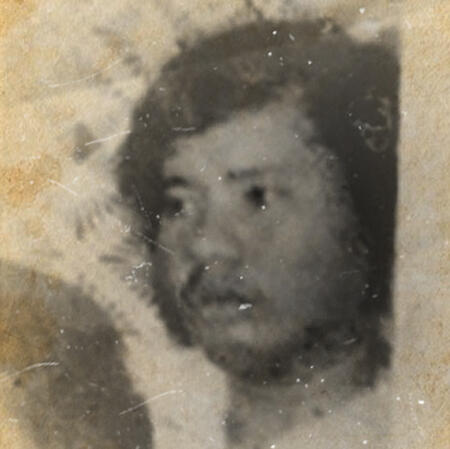
BIRTHDAY: November 27, 1950
BIRTH PLACE: Pinamalayan, Oriental Mindoro
MAJOR/PROGRAM IN UST: Scholar -
BA Political Science
DATE OF DEATH: November 3, 1972
PLACE OF DEATH: Socorro, Oriental Mindoro
DESAPARECIDO: No
LIFE STORY
Reynante C. Andal is the eldest of the nine children of his Guerilla fighter father who fought in World War 2 during the Japanese occupation and his stay-at-home mother. His father died when he graduated high school, that is the reason why he was tasked to take care of his younger siblings. Andal left his hometown to go to Manila in the year 1968 for a University Scholarship from the University of Santo Tomas, majoring in Political Science.
After spending some time in the city, He quickly became active in a Filipinization movement started by Ateneo de Manila students, and helped create a UST equivalent, the “Kilusang Kristiyano ng Kabataang Pilipino” (known as 3KP). He also became a member of the Kabataan Demokratiko Samahang (SDK). He was one of the founding members of “Kapulungan ng Sandigan ng Pilipinas”, a reform-oriented youth group, in 1970 (KASAPI).
He organized support for survivors and witnesses of the 1971 incident in Bantay, Ilocos Sur, in which two sitios were burned down in an act of warlord terrorism. During the catastrophic flooding in Central Luzon in 1971, he joined the relief efforts. In the same year, he organized and led the Samahan ng mga Kabataan sa Ikauunlad ng mga Tsuper, which backed the pre-martial law period's headline-grabbing transport strikes.
With his charismatic looks, he was known to be a fiery talker. Andal stopped going to his classes in the middle of 1972 and focused on his organizations. By 1974, when Martial law was declared, he and his friends headed to Pinamalayan, Mindoro. They wanted to fight an oppressive regime. Soon later, soldiers from Task Force Lawn surrounded and opened fire on the hut where they were staying. Two local youths, Antonio Pastorfide and Rene Julao, were killed instantaneously, while Andal and Dante Perez of Ateneo de Manila University in Manila were both injured. During a brief respite from the gunfire, one of the hut's inhabitants, Perez's wife and an activist, ran out to implore the troops to stop shooting.
Even when their colleagues implore to stop shooting, the troops still stepped inside and shot the two wounded men to death. He died at the age of 21.
THOMASIAN HEROES DURING THE MARTIAL LAW
search: Martial Law
ROSALINDA GALANG-REYES
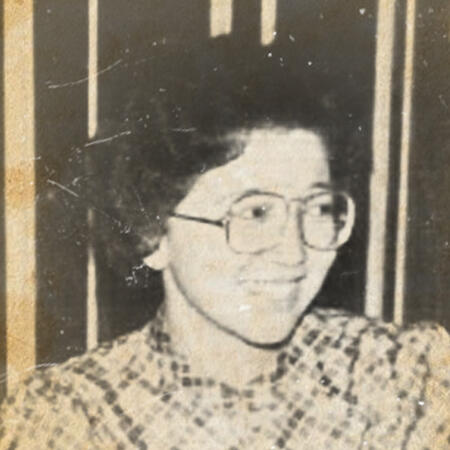
BIRTHDAY: January 5, 1949
BIRTH PLACE: Sampaloc, Manila
MAJOR/PROGRAM IN UST: BA Journalism
DATE OF DEATH: October 12, 1998
PLACE OF DEATH: National Kidney Center, Quezon City
DESAPARECIDO: No
LIFE STORY
Rosalinda Galang-Reyes, known as Roz by her friends, was the managing editor of The Varsitarian before graduating in 1969 and was a feature writer for the women’s magazine of The Manila Times, Variety. Roz was arrested the night before Martial Law was declared, as she was suspected of insurgent activities brought by her coverage of student rallies. She later found herself included in the Armed Forces of the Philippines’ (AFP) “National List of Target Personalities.
In the eight months she was detained, she was seen producing crocheted blouses and shawls to pass time in Camp Crame. It was within the efforts of her father that led to her liberty after several months, her liberty did not lead to her demise in spreading truth. She was more proactive in rallies against the Marcoses. She edited the underground paper, Kalayaan. On working the paper, she was admired by her colleagues as the work she did was not in need of editing and was done in a fast manner. Upon writing in Kalayaan, she often escaped arrest and detention.
After the martial law was dismantled in 1986, she still chose to write to certain organizations such as the Task Force Detainees of the Philippines and the like. She was given a citation in a London-based human rights institution for her articles on human rights and by PhilRights which she worked at until she died of lung cancer in 1998.
THOMASIAN HEROES DURING THE MARTIAL LAW
search: Martial Law
ARMANDO LANO MENDOZA
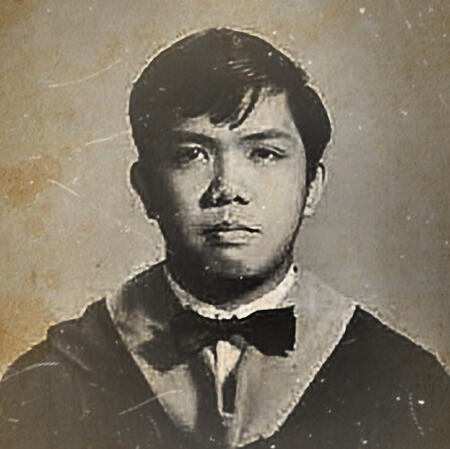
BIRTHDAY: July 11, 1949
BIRTH PLACE: Manila
MAJOR/PROGRAM IN UST:
1970 - Started school at the University of Santo Tomas
1972 - Left University of Santo Tomas (Martial Law was declared)
DATE OF DEATH: October 17, 1975
PLACE OF DEATH: Lucena, Quezon
DESAPARECIDO: No
LIFE STORY
Armando Lano Mendoza started his career at the University of Santo Tomas in the year of 1970. Afterwhich, he joined the UST chapter of the “Kabataang Makabayan” and he quickly rose through the rank to become one of it’s most influential members. He became a part in the assistance of the formation of the Kabataang Makabayan chapters in local schools and communities. He is known to be a working student, because while studying, he worked for the First Continental Assurance Company.
In September 1972, when Martial Law was declared by Ferdinand Marcos, Mendoza decided to leave and drop his studies at the University to move in with some farmers in the rural districts of Batangas. He accompanied them while educating the farmers the realities of Martial Law. In Batangas, he discovered a place among farmers, agricultural workers, and sugarcane workers. He instilled in them the ability to band together and fight for their rights, especially the right to own the land. Through this, in 1973, he gained a name for himself as the “Underground Political Organizer” and true enough, he was the target of military intelligence.
At this point, word reached the family that another family member, Alfredo, who is Armando's older brother and a church organizer, had inexplicably vanished from a Davao City prison. But this didn’t stop him from believing his principles. In May 1974, the family of Armando was raided and this forced his family to stop the communication with him. In November of that year, they found Armando being kept in prison inside a small military detachment. It has been six months since he was arrested. He looked dirty and uncared for, and he bore torture signs such as blisters and cigarette burns. Armando was sent to a regular prison center in Canlubang, Laguna, in December, where he spent Christmas. His jail visitors were notified in January of the following year that he had escaped with eight others during the latter days of December.
The family learned in December 1975 that Armando had been executed with three other people in Lucena, Quezon, in October 1975. Armando's body was never found, just as his older brother Alfredo's was never located.
THOMASIAN HEROES DURING THE MARTIAL LAW
search: Martial Law
ALFREDO CELI CEZAR JR.
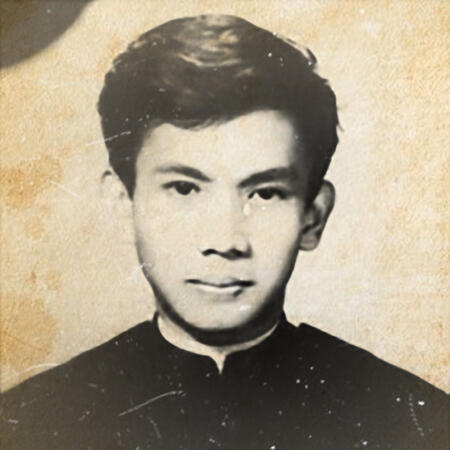
BIRTHDAY: December 28, 1948
BIRTH PLACE: Bolinao, Pangasinan
MAJOR/PROGRAM IN UST: Cum Laude Graduate (Bachelor’s degree), Licentiate in Sacred Theology, Doctor of Canon Law
DATE OF DEATH: October 11, 1982
PLACE OF DEATH: Baybayading, Salcedo, Ilocos Sur
DESAPARECIDO: No
LIFE STORY
Alfredo Cezar was known for his devotion to the Catholic religion, from serving as a parish altar boy and entering the seminary, to becoming a deacon. He grew up in a huge family that’s why at a young age, he had to hustle and shoulder some of the adult responsibilities. During Cezar’s last years at UST, he was drawn to the First Quarter Storm (FQS), a period which took place in the first quarter of 1970, involving demonstrations and protests against the abuses of the Marcos dictatorship. He then became affiliated with the Kilusang Kristiyano ng Kabataang Pilipino (KKKP), took part in its study sessions and integration trips to urban poor areas. After finishing his studies, Cezar taught and served as a thesis adviser at the Sta. Catalina College in Caloocan City.
On account of the declaration of Martial Law, Cezar went back to Pangasinan in Bolinao, his hometown. He quietly worked with the local church people and organized resistance movements against the regime with the people of Bolinao. Cezar also provided a safe place to activists who were evading the waves of arrests and searches by the military. Cezar then left Bolinao in 1974 and joined a research team in Baguio City, producing the “Northwestern Luzon Regional Social Investigation 1980,” which was undertaken under rigid martial-law conditions, and later on became a landmark project and served as a handbook to activists in the region.
After accomplishing the research project, Cezar went to Ilocos Sur and became a volunteer parish organizer for Fr. Zacarias Agatep, an advocate for the welfare of the local tobacco farmers. Cezar worked with Fr. Agatep in raising awareness among locals of Ilocos regarding the situation in the country. Cezar eventually joined the armed resistance in Ilocos Sur, and was tagged as “Ka Darwin''. He witnessed the problems faced by tobacco farmers firsthand and found more evidence of military abuses in the Ilocos region. Alfredo Cezar and Fr. Zacarias Agatep were said to have fought against soldiers during a dawn raid, to give their comrades a chance to escape, which led to their death.
THOMASIAN HEROES DURING THE MARTIAL LAW
search: Martial Law
MANUEL F. ONTONG
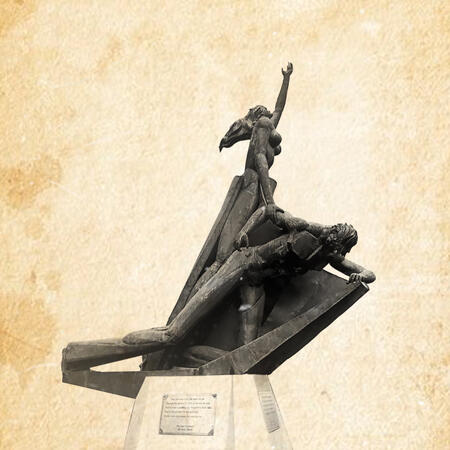
BIRTHDAY: October 14, 1946
BIRTH PLACE: Manila
MAJOR/PROGRAM IN UST: Bachelor of Fine Arts
DATE OF DISAPPEARANCE: November 26, 1975
PLACE OF DISAPPEARANCE: Manila
DESAPARECIDO: Yes
LIFE STORY
Manuel F. Ontong was a talented artist. He had the ability to translate his emotions through his art.This earned him to be recognized as the “Best Expression of the Filipino Soul” by the Art Association of the Philippines in the year 1970. His affinity to the arts made him a special person in the fight against the Marcos dictatorship. He was a member of the Samahang Demokratiko ng Kabataan and Sining Bayan where he was able to express his advocacy to be the voice of the oppressed by the Marcos regime.
Two years after he graduated college, he worked for the National Museum as an artist-illustrator. In 1969, he was nominated for a study grant in Australia. Unfortunately, this did not pull through and this made him speculate that it was because he had no one powerful to back him up. This culture of palakasan is something that opened his eyes to the unfair power play that is brought by the regime. Around the same time, the director of the National Museum resigned as she had become critical of the Marcos administration. This would then be followed by Otong.
With Otong being an activist, he was arrested and detained with other activisists for a week. Of course, this scared his mother and Otong would continue to pursue his career as an artist-illustrator for the Philippine Council for Agricultural Research and Resource Development in Los Baños, Laguna. Around this time, martial law was declared. With the growing political turmoil, Ontong felt strongly for the people. This urged him to support the cause of the people by creating posters and paintings that would convey the cry of the masses. Unfortunately on November 26, 1975, his family received an anonymous call that informed them of Ontong being picked up by men and taking him away in an army jeep. His mother looked for him in different detention camps but she never found him.




